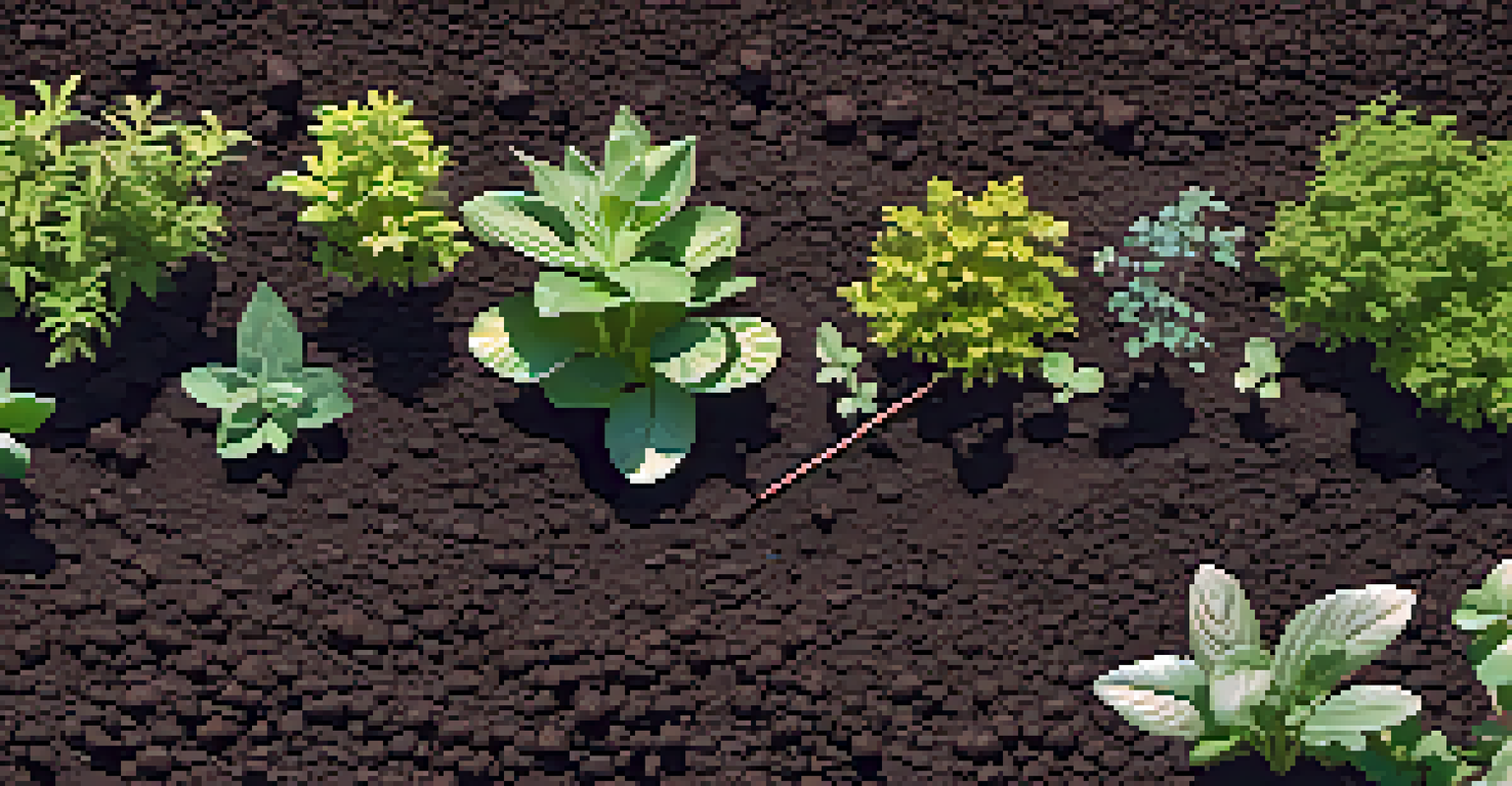How to Create a Climate-Resilient Landscape Design

Understanding Climate Resilience in Landscape Design
Climate resilience refers to the ability of landscapes to adapt to changing climate conditions, including extreme weather, droughts, and floods. It’s about creating spaces that not only survive but thrive even when faced with environmental stressors. By integrating climate resilience into landscape design, we can enhance biodiversity, protect ecosystems, and provide benefits for both people and wildlife.
Nature does not hurry, yet everything is accomplished.
Consider your local climate and its projected changes. This helps in selecting plants and materials that are better suited to withstand the anticipated conditions. For example, if your area is likely to experience more severe droughts, choosing drought-resistant plants can significantly reduce water usage and maintenance efforts.
Ultimately, designing with resilience in mind means creating landscapes that are not only beautiful but also functional and sustainable. This approach can lead to healthier ecosystems, reduced erosion, and a more enjoyable outdoor space for everyone.
Assessing Your Site's Unique Climate Challenges
Before diving into design, it’s essential to assess your site’s specific climate challenges. This includes understanding factors like soil quality, drainage patterns, and the sun and wind exposure throughout the year. Each of these elements can influence plant growth and the overall success of your landscape.

Conducting a site analysis allows you to identify vulnerable areas that may require special attention. For instance, if certain parts of your yard are prone to flooding, implementing rain gardens or permeable paving can help manage excess water and prevent erosion.
Embrace Climate Resilience
Integrating climate resilience in landscape design enhances biodiversity and creates sustainable spaces that thrive despite environmental stressors.
By tailoring your design to the unique conditions of your site, you can create a more resilient landscape that minimizes risks and maximizes benefits. This customized approach not only enhances the aesthetic appeal but also promotes long-term sustainability.
Choosing Native Plants for Resilience
One of the best strategies for creating a climate-resilient landscape is to incorporate native plants. These species are adapted to your local climate and soil conditions, making them more likely to thrive with less water and maintenance. Additionally, native plants support local wildlife, providing food and habitat for pollinators, birds, and beneficial insects.
The greatest threat to our planet is the belief that someone else will save it.
For instance, if you live in a region that experiences hot summers, selecting native drought-tolerant plants can significantly reduce irrigation needs. Plants like coneflowers or black-eyed Susans not only add beauty but also help to conserve water resources.
Incorporating a diverse array of native species can create a robust ecosystem that is better equipped to withstand pests, diseases, and climate fluctuations. This diversity is key to maintaining the balance and health of your landscape.
Incorporating Water Management Techniques
Water management is crucial for any climate-resilient landscape. Effective strategies such as rainwater harvesting, bioswales, and permeable pavements can significantly reduce runoff and improve water retention in your garden. This is especially important in areas that experience heavy rainfall or drought.
For example, installing a rain barrel can collect runoff from your roof, which you can later use to irrigate your plants during dry spells. Similarly, bioswales can help channel and filter rainwater, reducing flooding and promoting groundwater recharge.
Use Native Plants Wisely
Choosing native plants tailored to local conditions can significantly reduce water needs and support local wildlife.
By integrating these water management techniques, you not only protect your landscape from extreme weather events but also contribute to the overall health of your local watershed.
Creating Soil Health and Stability
Healthy soil is the foundation of a resilient landscape. It supports plant growth, regulates water retention, and helps filter pollutants. To create stable and productive soil, consider practices like composting, mulching, and crop rotation, which enhance soil structure and fertility.
Adding organic matter, such as compost, not only improves soil health but also helps retain moisture, making your plants less susceptible to drought. Healthy soil also promotes beneficial microorganisms that contribute to plant health and resilience.
Investing in soil health will pay dividends in the long run, resulting in a thriving landscape that can withstand the stresses of climate change.
Designing for Biodiversity and Ecological Balance
A key principle of climate-resilient landscape design is promoting biodiversity. Diverse plantings can create a more balanced ecosystem, making it less vulnerable to pests and diseases. By including a variety of species, you can ensure that some will thrive even in changing conditions.
For example, mixing flowering plants with grasses and shrubs not only enhances visual interest but also attracts a range of beneficial insects and wildlife. This diversity helps create a natural pest control system, reducing the need for chemical interventions.
Focus on Soil Health
Investing in soil health through practices like composting improves moisture retention and supports plant resilience amid climate challenges.
By fostering biodiversity in your landscape, you not only contribute to a healthier environment but also create a more dynamic and engaging space for you and your community.
Adapting Maintenance Practices for Resilience
To sustain a climate-resilient landscape, it’s important to adapt your maintenance practices as well. This means moving away from traditional, high-input gardening methods and embracing practices that promote sustainability. For instance, consider reducing lawn areas and replacing them with native plant gardens that require less mowing and watering.
Regularly monitoring your landscape helps you identify issues before they become major problems. This proactive approach allows you to manage pests organically and adjust watering schedules based on weather conditions, promoting a healthier ecosystem.

Ultimately, by adopting maintenance practices that align with your resilience goals, you can ensure your landscape continues to thrive, no matter what climate challenges arise.